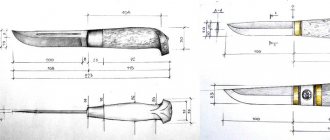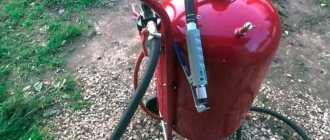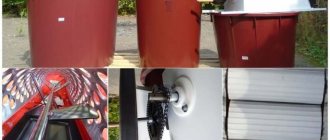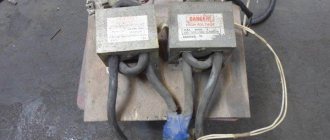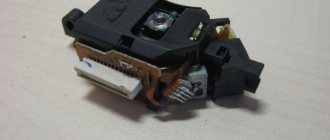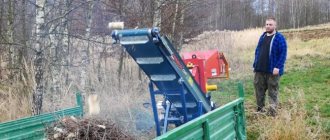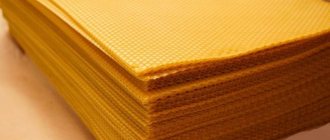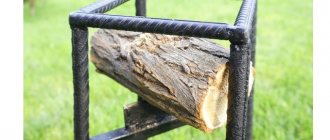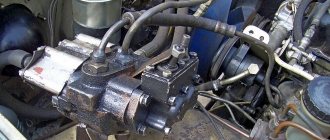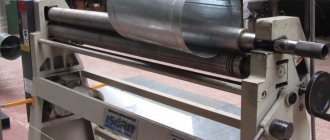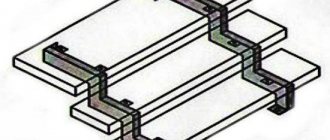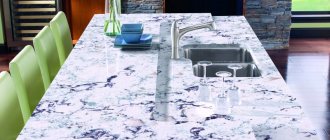The sandblasting machine is used for processing, cleaning from dirt and polishing products made of metal, wood, and concrete. The design of this device is not complicated, but it necessarily includes several main components.
A sandblasting nozzle is a hollow, threaded tube designed to deliver an abrasive mixture to a contaminated surface. If you wish, you can make a nozzle with your own hands, although the highest quality nozzles can only be purchased ready-made.
Design and characteristics
The purpose of the nozzle is to increase the speed of air flow with sand and form a treatment spot. The straight nozzle has the main elements:
- frame;
- thread for fastening to the nozzle holder;
- confuser;
- diffuser.
The housing protects a person from injury in the event of destruction of the internal nozzle. It is quickly erased by abrasive particles passing through it. At the same time, on the back of it there is a thread for a union nut or clamp, with which it is attached to the handle - the nozzle holder.
The confuser is a long conical hole in the insert that regulates the speed of the supplied mixture. Has standard holes with a diameter of 6–16 mm, with a pitch of 2 mm. The choice depends on the performance of the installation.
The diffuser is conical, short, expands at an angle of 7–15⁰. Thanks to it, turbulence is eliminated and the sand is evenly distributed over the working spot. The outlet of the nozzle can be round or oblong, depending on the size of the workpiece and its shape.
Between the confuser and the diffuser there is a section with a uniform cross-section. Having passed along the tapering cone of the nozzle, air and sand form a mixture of uniform composition.
Venturi nozzle
The complex design of the high-performance Venturi nozzle has an internal diameter with a stepped variable cross-section, consisting of a number of cylinders. The diameter of the inlet hole is almost 2 times larger than the outlet hole. This changes the nozzle parameters and increases the flow rate when operating in one mode. For example, an air-sand mixture comes out of a classic nozzle at approximately 320–350 km/h. When installing a Benturi nozzle, the speed of the outflow flow increases to 700 km/h.
The nozzle has a complex design. In addition to the standard elements, the tip is protected by a shockproof rubber shell. There is an aluminum bushing underneath for strength. Insert made of durable and abrasion-resistant tungsten carbide alloy.
It is impossible to make a Venturi design nozzle yourself. Inside it, the cross section changes stepwise. Each transition has a protrusion. Its integrity depends on a correctly selected radius, which is calculated depending on the difference in the diameters of the transition. Rounding is performed with an accuracy of 0.005 mm. Benturi type nozzles are manufactured using modern technologies on computer-controlled equipment.
Working with sandblasting with a Venturi nozzle
This is interesting: Rolling machine: types, making it yourself
Design features of a nozzle for a sandblasting machine
Any sandblasting nozzle looks like a pipe, which at one end is connected to the nozzle holder. The profile of the internal hole of the part determines the consumption of the abrasive mixture, its possible losses, and the speed of movement at the inlet and outlet. The total hydraulic resistance, and therefore the service life of this important part of the sandblasting installation, depends on the nozzle profile.
Most often there are products with a cylindrical internal hole, which are considered the simplest in design. Tubes with two conical sections are recognized as the most effective:
- an inlet confuser that increases the energy of the air-sand mixture flow;
- an outlet diffuser that increases the surface area being processed simultaneously.
Venturi nozzles, which have a better internal hole profile, ensure minimal possible losses of the air-sand mixture. Inside the hole there are three connected sections: in addition to the two conical sections, there is another cylindrical section that helps reduce the hydrodynamic resistance of the working mixture. Such tubes allow the abrasive jet to reach a speed of up to 720 km/h, while conventional devices with an internal hole diameter equal throughout their entire length are not capable of providing a flow speed of more than 320 km/h.
Ready-made serial nozzles have standard diameters: 6 mm, 8 mm, 10 mm, 12 mm. The higher this indicator, the higher the power of the jet produced by the sandblasting unit. The approximate capacity of the device with a minimum nozzle size (6 mm) is 30 cubic meters. m/hour.
The incoming diameter at the hose connection point as standard is 2.5 or 3.2 cm. The nozzle is connected to the nozzle holder via a connecting thread, or through a union nut and a sealing washer. If the part is made independently, it is attached to the sleeves (hoses) with clamps.
Connection diagram for the nozzle via a ball valve
Advantages and disadvantages
Sandblasting equipment allows you to quickly clean the surface of various contaminants and outdated finishes:
- dirt;
- oil;
- scale;
- fat;
- dye;
- primer;
- putty.
It takes several times less time to prepare a part for further processing and painting than using detergents and solvents.
Sand is easy to obtain. If used continuously, it can be used several times. It must be sifted and calcined.
The air flow with sand and other abrasives penetrates narrow cracks and small holes. The cleaning speed does not depend on the complexity of the design.
Sandblasting machines have a simple design. It is enough to connect the compressor and a container with sand with hoses.
Disadvantages include operating equipment under high pressure. If a hose ruptures or enters the work area, a person may be seriously injured.
The attachments wear out quickly. A metal nozzle made of abrasion-resistant steel is enough for 1 – 2 hours of operation.
Peculiarities
A sandblasting machine is a long-time and successfully used device that is used to clean surfaces from dirt. Its main purpose is to create a powerful supply of abrasive mixture. The simplest nozzle holder can be made with your own hands at home, but modern designs not only form a torch (a directed jet of air and sand), but also prepare it, use it economically, and impart the characteristics necessary for a specific surface.
Such devices can be used in a variety of situations - from cleaning the walls of houses to removing rust from a metal surface, and even for engraving on a glass surface. Hence the variety of models, simple, but made in different sizes. The need to work with a certain material and create the proper pressure dictates the requirements for the dimensions of the apparatus and its components. One of them is a sandblasting nozzle.
The importance of this detail is difficult to overestimate, since it is it that increases the flow rate of the mixture from the unit and forms a torch . It is selected according to its intended purpose and performance characteristics, as well as the nozzle holder, which is sometimes considered by craftsmen to be part of the functional bell.
Despite the similarity of the design (consists of a body, threads for reliable fastening, confuser and diffuser), it is divided into different types according to:
- the material of the case (its strength and service life depend on this) and the method of fixation to the handle - a nut or clamp;
- the diameter of the holes in the confuser (selected according to the sandblasting performance indicator);
- diffuser expansion angle;
- the shape of the outlet (round or oval, determined by the shape and size of the object being cleaned).
Standing apart from the simple lineup is the Venturi nozzle . It cannot be done at home, since this will not allow for a stepwise change in the cross-section.
An important difference that deserves close attention when choosing is the material of manufacture. Knowing some features, you can choose a nozzle that is suitable for achieving your goal and will last a longer time.
What you need to know about the principle of operation of a homemade sandblaster
Whatever type of design is chosen, the device must form a jet of air-abrasive mixture at the outlet. The pressure system works by supplying high pressure of the selected abrasive to the outlet pipe, where it mixes with the air flow supplied from the compressor. If we talk about the ejector device, it is worth knowing that the work here is carried out using the Bernoulli effect, based on the creation of a vacuum, which sucks in sand.
There are a huge number of diagrams and hand-made drawings of sandblasting machines that allow you to make them yourself. Each inventor prefers to use various unnecessary parts that are on hand, but all designs will work on a similar principle.
Before you make a sandblasting machine with your own hands, you need to understand the mechanism of operation of the tool and prepare all the necessary design details. If you assemble the elements correctly, the homemade device will be in no way inferior to the serial one. It is often possible to construct a device at minimal cost.
The principle of operation of a sandblasting machine is very similar to a spray gun.
This is interesting! The principle of operation of sandblasting is very similar to the mechanism of action of a spray gun, the main task of which is to spray paint and varnish materials. However, one device can never replace another.
The main element that is needed for a sandblasting machine is a compressor. It is thanks to it that an air flow at the required pressure is created in the pipelines of the structure. When air passes through the main hose through the sand blasting hose, a vacuum is created, causing the abrasive mixture to be sucked into the main line, where it is combined with the air stream.
Then the mixture of air and abrasive reaches the nozzle - a hole through which sand is supplied to the surface under high pressure. It follows from this that, in addition to the compressor, it is necessary to supplement the design with hoses of the required diameter, connecting fittings, taps and dispensers. To ensure uninterrupted power supply to the working device, you will need an electrical cable.
A sandblasting nozzle is an element that forms an abrasive jet with the characteristics necessary for work. You can make a ceramic nozzle with your own hands, because used spark plugs, from which the electrode is first removed, are ideal for the base. On serial devices there is a steel element with an internal boron carbide or tungsten carbide coating. Numerous user reviews note that such parts very rarely serve their owners for a long time.
The sandblasting nozzle forms an abrasive jet with the characteristics necessary for the job.
Manufacturers
Experts recommend nozzles from the following companies:
- Contracor - Russia;
- CLEMCO - Germany;
- VMZ - Velikoluksky Mechanical Plant.
German products are known for their reliable performance and long service life. Nozzles from CLEMCO are considered the best. The company produces mainly ceramic and tungsten carbide inserts.
Sandblasting nozzles from the Russian company Contracor are not inferior to them in quality. The main products are boron carbide, tungsten and ceramic inserts are available.
VSW produces conventional nozzles at a budget price. Hobbyists can purchase a variety of attachments - metal, ceramic and cast iron for one-time repairs.
Operating principles
A lot depends on the nozzle: the quality and the processing process itself, the consumption of air and sand. This element can be made of different materials, which affects its durability. Cheap elements are designed to last several tens of hours, but it happens that they are destroyed after just an hour of operation. This applies to ceramic and cast iron parts. Tungsten carbide nozzles can last up to 1000 hours of operation. But they are relatively expensive.
The essence of sandblasting
Sandblasting involves exposing various surfaces to an abrasive material. Sand, shot, silicon carbide, small glass beads, etc. are used as the latter.
Sandblasting is a mechanical action on the surface of small solid particles
Before processing begins, the abrasive is placed in a sealed hopper. Air coming from a separate compressor is supplied through the main hose of the device under high pressure. Passing by the opening of the intake hose, the air flow creates a vacuum in it, which facilitates the suction of abrasive into the main hose. The air, already mixed with abrasive, is supplied to the gun, the main element of which is a sandblasting nozzle, through which the abrasive mixture is supplied to the surface being treated.
Layout of the sandblasting area
As mentioned above, various types of abrasives can be used to perform sandblasting. The choice here depends on the type of surface that needs to be cleaned. Thus, treatment using sand is effective in cases where it is necessary to remove a layer of old paint from a concrete surface, clean brick walls from cement residues, and prepare metal parts for further painting. Abrasives such as plastic or wheat starch are successfully used in the shipbuilding, automotive and aircraft manufacturing industries, with their help they effectively remove old coatings from composite materials.
This is interesting: Check valve for water: principle of operation, design and varieties
What components will you need: how to choose a compressor for a sandblasting gun
The compressor is the most important part, because a sandblasting machine will not work without this element. Therefore, the choice should be approached carefully, if only for the reason that the device is quite expensive.
It should be remembered that the performance of the device will depend on this component. Many do not advise making your own compressor for sandblasting, the power of which is 500 l/min. It is optimal when the indicator is at the level of 700 liters. It must also be taken into account that this power must be maintained at a pressure of 8 bar. The main elements influencing the pressure-volume ratio are:
The most important part in sandblasting is the compressor.
- diameter of abrasive and air hose;
- material used to make the nozzle;
- line length;
- type and type of abrasive material.
An important criterion on which the choice and operation of a compressor depends is the diameter of the nozzle. The higher the indicator, the higher the pressure; the faster it will be possible to clean the surface. You should also pay attention to pressure indicators - it all depends on the type of material being processed.
The table shows what pressure will be sufficient to process various surfaces:
| Surface type | Required pressure, bar |
| Concrete, artificial stone | 3-5 |
| Metal surfaces | 8 |
| Surfaces resistant to mechanical stress | 12 |
It is better to take a device with a certain power reserve, because it is not always possible to think in advance where you will have to use sandblasting, especially since you can make a device of any power.
Main types of compressors for sandblasting machines
There are mainly 2 types of compressors used in sandblasting machines:
- screw;
- piston
In most cases, when manufacturing independently, preference is given to piston options. These compressors are characterized by high performance, but the air is supplied into the main line in certain bursts. To eliminate this problem, an additional receiver is installed.
Screw and piston compressors are used in sandblasting devices
Some users also note that piston devices sometimes have problems with oil supply. This leads to the appearance of moisture-oil condensation. The consequence of this nuance is the formation of lumps in the abrasive material, which can lead to tool failure.
The operating principle of a sandblasting machine with a screw compressor is somewhat different. Here, the device is based on 2 worm-type gears, rotating in different directions. The main advantage is the absence of noise and unnecessary vibrations. It is for these reasons that if you plan to assemble a mini sandblasting machine for home use, it is better to choose a screw compressor.
Based on the type of power supply, compressors are divided into diesel and electric. Each option has its own advantages and disadvantages. If you plan to assemble a small mobile device, it is better to give preference to the diesel option, the main advantage of which is that it is not connected to a 220 V network.
Accordingly, the device will be convenient to carry around the site, for example, to remove paint from a fence or gate. Another advantage of a diesel compressor is the ability to automatically control engine speed. This makes it possible to regulate and save fuel consumption.
When making sandblasting yourself, preference is given to piston compressors
The advantage of an electric compressor is lower fuel costs, but there is always a connection to the presence of a power outlet. It can be used at any temperature, while to operate a diesel appliance in frosty conditions, you will have to additionally purchase a cold start and preheating unit. Diesel engines really don't like low temperatures.
Related article:
Spray gun for water-based paint: varieties and selection tips
Types of sprayers for water emulsion. Rating of the best models. Recommendations for the selection and use of spray guns.
If you want to save as much as possible, you can make the device yourself using available components. In particular, ready-made compressor heads, which are removed from the pneumatic brake equipment of such cars as ZIL and MAZ, are suitable for work. They can often be found at old salvage yards, flea markets or on classifieds websites. For normal operation of the head, you will need to equip it with a receiver, as well as a frame for convenient fastening of other structural elements.
What parts are useful as components for making sandblasting with your own hands?
Before sandblasting, you should make sure you have the necessary parts, most of which can always be found in your garage, storage room or workshop. You should look for missing items at flea markets or hardware stores. One of the important components is the container from which abrasive sand will be supplied to the main line. Most craftsmen prefer to use an old gas cylinder for this purpose.
Important! If you use a gas cylinder for work, you should carefully check that there are no signs of rust, dents or other damage. In addition to using the cylinder as a container for abrasive, it can be useful for making a receiver for a compressor, however, during disassembly, maximum safety precautions must be observed.
Without all the necessary parts, sandblasting will not be assembled.
In order for the container to be freely filled with abrasive, it is necessary to weld a piece of pipe to the container. For convenience, a neck should be fixed in the upper part, which will act as a funnel for pouring sand. You will also need other equipment for sandblasting:
- Ball Valves. It is better to choose the most reliable and durable materials from trusted manufacturers with a good reputation.
- Reinforced rubber hose. The best option is a sleeve with a diameter of 14 mm, which is designed for high pressure and constant friction of abrasive sand.
- Gas hose. The diameter of the product must be at least 1 cm. It is through this hose that compressed air will be supplied to the system, which has not yet mixed with the abrasive material.
- Collet-type fittings and clamps. Needed to secure hoses to other elements of the system.
- Fum tape or other sealant. All connections require reliable sealing, because sandblasting works under constant high pressure.
Most of the parts you need can be found in your garage
Types and types of abrasives for surface treatment
The main consumable for work is abrasive, under the influence of which the surface is cleaned. Sand simply taken from the river bank will not be suitable for this purpose, because it has a heterogeneous composition, and its particles are unequal in size and shape. All this will subsequently affect the quality of the treated surface. In addition, large grains of sand break down and turn into dust during the cleaning process, and the abrasive itself very quickly becomes unusable, so it needs to be constantly renewed.
First of all, you need to remember that only special types of abrasive are suitable for high-quality cleaning. Often this is not only sand, but also other suitable materials of artificial and natural origin. The choice of option will depend on the specifics of the work. The main parameters in this case are:
- hardness;
- size;
- form.
Interesting fact! In most countries, it is prohibited to use ordinary quartz sand for sandblasting, because quartz particles upon impact with metal turn into dust, which can cause severe pulmonary diseases. In addition to affecting the health of the sandblaster, the dust can harm others, even those far from the work site.
Sandblasting machines use such types of sand as river, quarry and industrial quartz
In general, the design of a sandblasting machine involves the use of such types of sand as:
- Regular river. The material must be sieved to obtain a homogeneous composition.
- Career. Somewhat finer than river material, but in addition to sifting, the material requires additional washing.
- Industrial quartz. A derivative of ordinary sand, obtained by sifting and dividing into fractions. The cost is 3 times more expensive than the river one.
- Special crushed abrasive. Obtained as a result of crushing quartz rocks. High efficiency in this case is ensured by the acute-angled shape of the grains, which has a good effect on the surface.
What can you use, besides sand, to make your own sandblasting chamber?
In addition to sand, other types of consumables are suitable for operating the device:
- Nickel and cooper slag. Some of the most popular options for sandblasting, which are obtained from copper and nickel production waste. The cost is the same as treated sand, but they are stronger and harder.
- Steel and cast iron shot. Not only the most expensive option, but also the most durable. Used for quick but rough surface treatment.
- Pomegranate sand. Harder than ordinary sand, but just as fragile. It is expensive and rarely used for work.
- Glass and stainless steel shot. Sandblasting glass is mainly used for cleaning stainless steel surfaces.
- Electrocorundum. Solid crystalline form of aluminum oxide. Virtually undamaged and suitable for even the most contaminated surfaces.
Steel and cast iron shot is the most durable abrasive
If you look at photos of sandblasting, you will notice that the chamber is a rectangular structure. Most often this is a box welded from a metal corner, which is lined with thin steel sheets up to 1 mm thick. To make it easier to control the amount of abrasive during operation, it is best to place a glass or plastic viewing window along the long side.
On the front wall of the chamber there are 2 symmetrical holes with a diameter of 100-120 mm, into which special thick gloves are inserted. It should be borne in mind that they will be constantly exposed to abrasive forces, so replacing these elements should not cause difficulties.
The bottom of the chamber is made of reinforced mesh, under which there is a trench for used abrasive. Comfortable work is ensured by lighting. To do this, just take 2 lamps of the required size. The sandblasting gun is placed inside the chamber, and air is supplied using a hose connected to the outside. Thus, the material will not fly out, which will make it possible to reuse it. In fact, this design option allows you to create a sandblasting gun with an abrasive recycling system.
Helpful advice! If you plan to clean non-standard products of large shape, it is recommended to cover the side edges with a durable tarpaulin. To make the camera as convenient as possible, you should not do the work by eye - it is better to prepare a drawing first.
In addition to sand, nickel and cooper slag, garnet sand, glass and stainless steel shot, as well as electrocorundum are used.
Overview of species
Types of functional devices can be divided into:
- pressure (designed for a large area that needs to be treated);
- injection (ideal for non-industrial work).
In turn, injection systems are divided into:
- suction;
- vacuum (the abrasive does not remain on the surface, but is sucked back by the vacuum);
- pneumatic – optimal for carrying out work over a large area.
The nozzle for a sandblasting machine can be:
- different diameters (both outlet and in the holes on the nozzle);
- round or oval cross-section;
- made of different materials - ceramic, steel and cast iron, boron carbide, fluorine (up to 1 thousand hours of operation) or tungsten.
In the description, you should definitely look at the performance of the compressor (this is one of the factors in the correct selection of the tip).
The Venturi nozzle stands separately, it has a complex design and is not cheap, but if the direct-flow nozzle gives an abrasive flow rate of no more than 340 km, it provides an indicator almost twice as high. When creating it, the principle of the Laval nozzle was taken into account, which in many cases determines the optimization of operation and regulation of the direction of the emitted jet.
How to do it yourself?
Craftsmen with imagination and skillful hands often make sandblasting attachments on their own, and this has an undoubted practical meaning. Buying a nozzle for a small rusty spot on a car or making it yourself from scrap materials - the only difference is wasting money or time. There are many videos on special websites in which home-grown craftsmen proudly demonstrate a homemade simple device made of steel or cast iron, a car spark plug. They use gas cylinders as a receiver and show improved models of a ready-made pistol, which is somehow unsatisfactory to use.
Let's look at how you can make sandblasting attachments yourself.
For production you will need:
- an ordinary plastic bottle, the volume of which is no more than 1 liter;
- a gun for blowing and another for inflating tires;
- the camera will need a valve.
The manufacturing process is shown in the video.
If you have a drawing, you can even assemble a sandblasting machine by purchasing its components separately in specialized stores. However, specialists in such work are confident that purchased products have higher functionality and performance . And if we are talking about a large volume of work, it is better to purchase a factory nozzle with good characteristics - shock resistance and long service life.
How to make a budget sandblasting nozzle with your own hands
If the sandblasting nozzle has become unusable, you can make a replacement yourself. True, the continuous service life of such a product will be short, but the cost of consumables will not hit the budget. The base for the nozzle can be a ceramic spark plug or an old ceramic resistor with an internal diameter of 2–4 mm.
The procedure for working with a resistor is as follows:
- Tear off the caps and legs with pliers or saw off with a grinder.
- take an M14 metal bolt, cut off the top, drill a through hole with a No. 5 drill.
- deepen the hole with a No. 8 drill approximately 1.4 cm.
- Weld a wide M5 washer onto the M14 clamping nut on top, and use a No. 8 drill to make a cone from the inside, pressing the future nozzle.
To create a nozzle from a spark plug, you need to proceed as follows:
- Using pliers, pull the contact rod out of the spark plug, after heating it with a gas burner.
- grind off the rolled edge of the spark plug body on a machine.
- knock out the ceramic insulator.
- Use a sharpener to cut the edges of the nut and remove it.
- Use a diamond wheel to cut off part of the ceramic insulator where the central electrode is located.
- attach an adapter with a clamping nut purchased or pre-machined from a bolt to the rod.
There are a variety of sandblasting nozzles on sale, and the service life and performance of the most modern products will be many times higher than that of homemade ones. If you regularly use sandblasting, it makes sense to purchase a high-quality ready-made part, but for a one-time job, if you have the necessary equipment and skills, you can make the nozzle yourself.
How to choose a nozzle for a sandblaster
In addition to the type of hole and diameter, the most important technical parameters of the nozzle, which directly determine its operation, are:
- length;
- manufacturing material.
The length should be selected depending on the degree of contamination of the surface to be treated. If the rust, dirt, plaque is not too thick, you can choose a short part (7–8 cm). For surfaces with difficult to remove, complex, thick layers of dirt, buy longer tubes (up to 23 cm).
To create a nozzle with your own hands, use a variety of materials and improvised devices. As for purchased products, they can also be completely different regarding the base, and the service life will vary greatly:
- ceramic – 2 hours;
- cast iron – up to 8 hours;
- tungsten – up to 300 hours;
- from boron carbide – up to 1000 hours.
The longevity of the nozzle also greatly depends on the type of abrasive material: for example, when replacing sand with steel shot, the service life increases by 2.5 times. Inexpensive products usually fail the fastest, so they are completely unsuitable for large volumes of work. For one-time household use, you can buy a ceramic or cast iron nozzle, or a set of them, to replace as needed. Professionals use tungsten or boron carbide parts, which are expensive, but are much more economical with regular use.
You should not purchase steel nozzles - ordinary carbon steel is not suitable for making nozzles for a sandblasting machine, as it is very sensitive to impact loads. Tungsten products also have their drawback: they do not tolerate heat well and can crack at temperatures of +80...+100 degrees. Parts made of boron carbide in this regard are superior to others: they can only deteriorate at +600...+750 degrees, which is unlikely during sandblasting. But their price reaches 1600–7000 rubles, so they are not very accessible to non-professionals.
Channel type of sandblasting nozzles
The nozzle channel directly affects the acceleration speed of the abrasive and air flow and the performance of the entire installation. Products with a straight-line (straight-through) channel are usually used for processing small surfaces or narrow parts. The most effective are nozzles whose diameter varies depending on the area, rather than remaining constant.
A typical representative of quality products are Venturi nozzles. They help businesses improve quality and efficiency, reduce time, labor, and cleaning costs. To use them, you do not need to change the abrasive (any one will do) or increase the compressor power.
Boron carbide nozzle GN UBC
These are the most commonly found sandblasting attachments on the market. They create a wide imprint of abrasive particles, allowing you to develop high speed and high kinetic energy. Typically used to perform a significant amount of work.
Boron carbide nozzle GN UBC XL
The length of the channel in such products is 3.5 cm, their productivity is 30–50% higher than that of the previous ones. The price of the attachments is quite high, and they cannot be used for small volumes of work due to the strong acceleration of abrasive particles.
Boron carbide nozzle GN DVBC
The Double Venturi technology uses the ejection effect - when air from the atmosphere is introduced into the abrasive flow. The diameter of the tube outlet is larger here than in the classic version, and the sand jet is supplied with maximum kinetic energy. To use such a nozzle, you need an installation with a powerful compressor, long hoses, and it is advisable to use it only on large surfaces to be treated.
Material and design of internal wear-resistant insert
As for the material for making the inside of the nozzle, it can be inexpensive but short-lived, or higher quality but expensive. The most popular for this purpose are boron, tungsten and silicon carbides. Due to the difference in processing technologies for these materials, nozzle designs can differ greatly from each other (for example, it is impossible to make a cylinder more than 7 cm long from boron carbide, which determines the design features of the nozzles - they have to be made of several elements). The wall thickness of the internal bushings also varies from 3 to 6 mm, which affects the resistance to abrasive action.
Containment design and nozzle build quality
The product shell is needed to fix the wear-resistant sleeve and protect it from rapid damage. It is the shell that bears most of the impact loads, so it is more susceptible to wear. In order for the nozzle to have sufficient service life, the protection must be made of abrasion-resistant material, be tightly attached to the sleeve, and have a reliable thread.
There are these types of shells:
- Polyurethane. Lightweight, resistant to damage by abrasives, but due to its low rigidity, its thread wears out quite quickly. Due to poor adhesion of polyurethane to the main materials for making bushings, the latter begin to move, air penetrates between them, and the protective shell deteriorates.
- Metal (steel, aluminum). Reliably attaches wear-resistant bushings, but its resistance to abrasive action is low. The shell suffers from corrosion and is too heavy in weight. A structure with such a part will be rigid, but can quickly become damaged.
- Combined (aluminum plus polyurethane). It is considered the most popular option; it is rigid but lightweight, and has a coarse pitch thread. Polyurethane in the front part protects the product from abrasive wear. It is only important to firmly fix the shell inside the sleeve, otherwise the nozzle will begin to collapse.
Build quality also plays an important role in the service life of the entire structure. There are low-quality nozzles on sale, where the body and the threaded part are pressed into each other. Most often, they quickly deteriorate, and at a pressure above 8–10 bar, they can even cause injury to a person or breakdown of the entire sandblasting machine. The most loaded part of the nozzle must be machined from a solid piece, otherwise the threaded area will tear out during operation.
